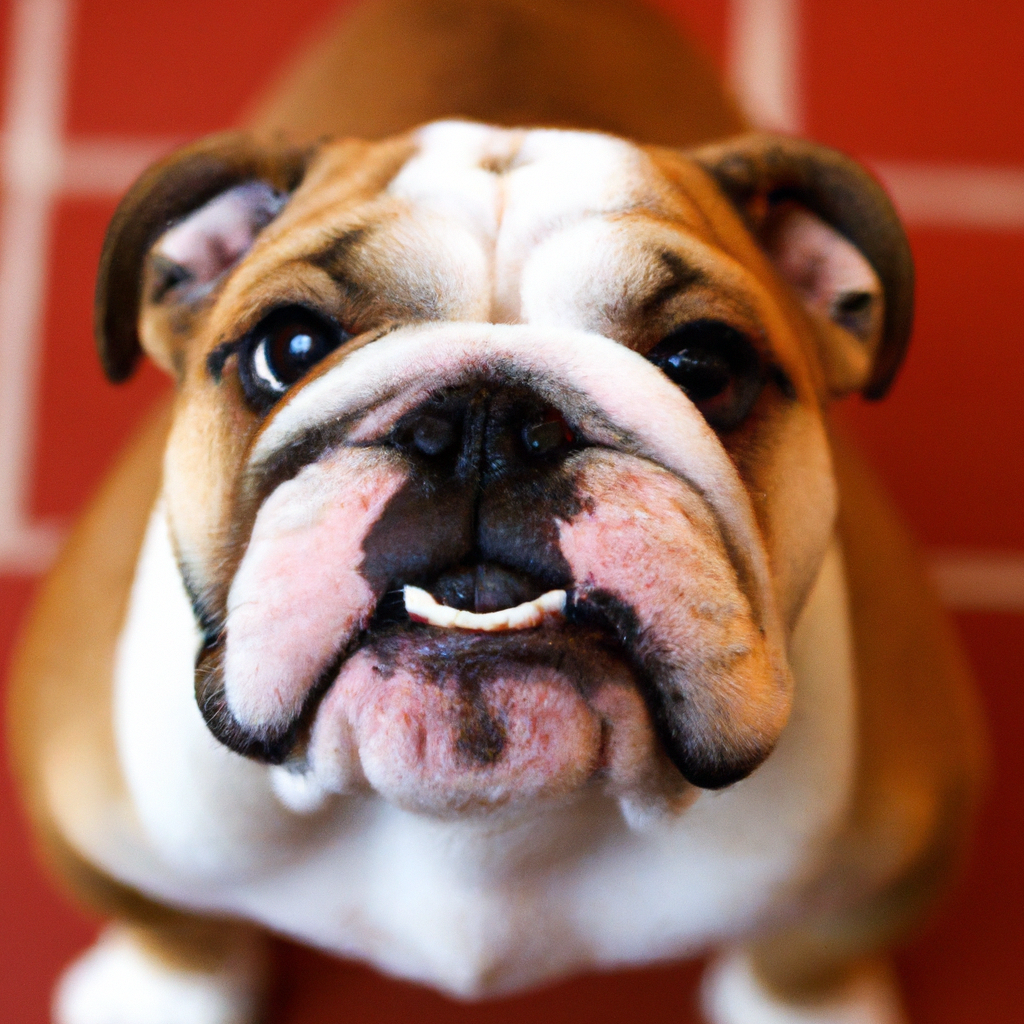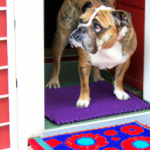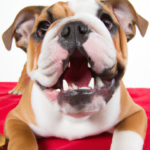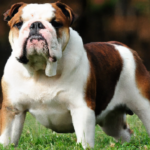Understanding the importance of bladder capacity in English Bulldog potty training is crucial for anyone looking to effectively train their adorable furry friend. English Bulldogs have their own set of unique characteristics and needs, making it essential to tailor training strategies to their specific requirements. Factors such as their individual diet, exercise routines, and behavioral patterns all play significant roles in achieving successful potty training outcomes. Additionally, taking into account a Bulldog’s physical attributes, like bladder capacity, is vital in creating a training regimen that is both effective and considerate of their needs. By exploring common training mistakes and offering innovative, Bulldog-friendly alternatives, owners can enhance the learning experience and overcome challenges like regression and indoor marking. So, let’s dive into the world of English Bulldog potty training and discover the role bladder capacity plays in achieving a well-trained and happy pup.
Understanding the Importance of Bladder Capacity in Bulldog Potty Training
When it comes to potty training English Bulldogs, one important factor that cannot be ignored is their bladder capacity. English Bulldogs have a unique set of characteristics and needs that require special attention during training, and understanding their bladder capacity is crucial for a successful potty training journey.
The Unique Characteristics and Needs of English Bulldogs
English Bulldogs are easily recognizable by their distinctive appearance, with their wrinkled face, compact body, and muscular build. They are known for their gentle and affectionate nature, making them popular pets for families and individuals alike. However, they also possess a stubborn streak, which can pose challenges during their training process.
Due to their unique physical attributes, English Bulldogs have specific needs that should be taken into consideration when formulating a potty training plan. One of these needs is their bladder capacity, which is directly related to their ability to hold urine for longer periods. Understanding the limits of their bladder capacity is vital for avoiding accidents and setting realistic expectations during the training process.
The Distinctive Appearance and Gentle yet Stubborn Nature of English Bulldogs
English Bulldogs have a one-of-a-kind appearance that sets them apart from other dog breeds. Their distinct wrinkled face, droopy jowls, and pushed-in nose give them a charming and lovable appeal. While their appearance may be endearing, it is their gentle yet stubborn nature that requires careful handling during training.
When it comes to potty training, the stubbornness of English Bulldogs can present challenges. They have a tendency to resist or ignore commands, which can hinder their progress in learning to go potty in the designated area. It is important to approach their training with patience, consistency, and positive reinforcement to overcome any hurdles they may present.

The Significance of Individual Diet, Exercise Routines, and Behavioral Patterns in Bulldog Training
A successful potty training experience for an English Bulldog extends beyond focusing solely on their bladder capacity. To create an effective training strategy, it is crucial to consider their individual diet, exercise routines, and behavioral patterns.
Diet plays an important role in their overall health and can affect their bathroom habits. Feeding them a well-balanced diet that meets their nutritional needs will contribute to better digestion and a more consistent potty schedule. Additionally, monitoring their water intake can help regulate their bladder and reduce accidents.
Regular exercise is also essential for English Bulldogs. It not only promotes physical fitness but also helps them burn off excess energy and maintain a regular bathroom routine. A consistent exercise routine can contribute to a more predictable potty schedule, making training more manageable.
Lastly, understanding their behavioral patterns is key to successful training. Some Bulldogs may exhibit certain behaviors, such as circling or sniffing, when they need to go potty. Recognizing and responding to these cues promptly can prevent accidents and reinforce the desired behavior.
The Role of Bladder Capacity in Bulldog Potty Training
Bladder capacity plays a critical role in bulldog potty training. English Bulldogs have a smaller bladder compared to other breeds, which means they have a limited ability to hold urine for extended periods. It is important to take this into consideration when developing a potty training plan.
Understanding their bladder capacity will help set realistic expectations for how often they need to go potty. Puppies, especially, have smaller bladders and will need more frequent bathroom breaks. By providing consistent opportunities for them to relieve themselves, accidents can be minimized, and the training process can progress more smoothly.

The Importance of Specific Nutritional Requirements for Successful Potty Training
In addition to bladder capacity, it is important to address the specific nutritional requirements of English Bulldogs when embarking on potty training. The food they consume directly impacts their digestive system and, consequently, their ability to control their bathroom habits.
Feeding English Bulldogs a high-quality, balanced diet that meets their nutritional needs is crucial for their overall health and well-being, as well as their potty training success. Poor diet choices can lead to digestive issues, irregular bowel movements, and increased urination frequency, making potty training more challenging.
Consulting with a veterinarian or canine nutritionist is recommended to ensure that their diet supports their bladder control and minimizes bathroom accidents. They can provide guidance on the appropriate type and amount of food to feed Bulldogs during the potty training process.
Implementing Effective Training Methods for Bulldogs
To ensure successful potty training for English Bulldogs, it is essential to implement effective training methods that address their unique needs and characteristics. There are several strategies that can be employed, including crate training and reward-based learning.
Crate Training as a Potty Training Strategy
Crate training is a popular and effective method for potty training English Bulldogs. This approach involves using a crate or confined space as a designated area for the dog to stay in when they are not actively supervised. The crate should be large enough for the dog to stand, turn around, and lie down comfortably.
Crate training utilizes the dog’s natural instinct to keep their living space clean. By confining them in the crate and gradually increasing the time they spend inside, they learn to control their bladder and wait until they are released to go potty in the appropriate spot. It is important to introduce the crate gradually and make it a positive and comfortable space for the dog.
Reward-Based Learning for Bulldog Potty Training
Reward-based learning is another effective method for potty training English Bulldogs. This approach focuses on positive reinforcement, rewarding the dog for exhibiting the desired behavior of going potty in the designated area.
When the dog successfully goes potty in the correct spot, they should be praised and rewarded with treats or verbal praise. This positive reinforcement helps them associate going potty in the right place with positive experiences, encouraging them to repeat the behavior.
Consistency is key when implementing reward-based training. Establishing a routine and consistently rewarding the dog for correct behavior will reinforce the desired habits and speed up the potty training process.

Seeking Professional Guidance for Bulldog Potty Training
While many owners can successfully potty train their English Bulldogs on their own, sometimes seeking professional guidance can provide additional support and expertise. Professional dog trainers and behaviorists have extensive experience working with various breeds, including Bulldogs, and can offer tailored advice to address specific training challenges.
A professional trainer can assess the unique needs and characteristics of the dog and provide personalized recommendations and techniques to ensure successful potty training. They can also provide guidance on any behavioral issues that may be hindering the training process and help develop a comprehensive training plan.
Addressing Common Training Mistakes in Bulldog Potty Training
During the potty training journey, it is common for owners to make mistakes that can hinder progress or create confusion for the dog. Recognizing these mistakes and addressing them promptly is important for achieving successful results.
One common mistake is punishing the dog for accidents. English Bulldogs respond best to positive reinforcement, and punishment can cause fear and anxiety, leading to further behavior problems. Instead of punishing, owners should focus on redirecting the dog to the appropriate spot and providing praise and rewards for correct behavior.
Inconsistency is another mistake that can impede potty training progress. English Bulldogs thrive on routine, so it is important to establish consistent schedules for feeding, exercise, and bathroom breaks. Inconsistency can confuse the dog and make it harder for them to learn the desired behavior.

Offering Innovative and Bulldog-Friendly Training Alternatives
In addition to traditional training methods, there are innovative alternatives available that cater specifically to English Bulldogs and their unique needs. These alternatives can provide additional support and enhance the training experience for both the dog and the owner.
For example, there are potty training pads designed specifically for Bulldogs that mimic the outdoor environment and encourage them to go potty in the designated area. These pads are made with materials that resemble grass, providing a familiar and comfortable surface for Bulldogs to relieve themselves.
Additionally, there are interactive toys and puzzle games that can be used to stimulate Bulldogs mentally and physically. These toys can be incorporated into the training process as rewards for correct potty behavior, making training sessions more engaging and enjoyable for the dog.
Achieving Training Success with a Balanced Approach
To achieve overall training success, including successful potty training, it is important to maintain a balanced approach that combines patience, consistency, and positive reinforcement. English Bulldogs respond best to gentle guidance and positive experiences, so it is important to create a supportive and encouraging environment throughout the training process.
Consistency is key in potty training, ensuring that the dog has regular opportunities to go potty in the designated area. Patience is also essential, as it may take time for Bulldogs to fully grasp the concept and develop the desired habits. Celebrating every small success and avoiding punishments or negativity will help establish a positive association with potty training.
Finally, continuously reinforcing the desired behavior with rewards and praise will encourage Bulldogs to consistently exhibit the correct potty habits. By focusing on positive experiences, English Bulldogs will be motivated to continue learning and improving their potty training skills.

Managing Issues like Regression and Indoor Marking in Bulldog Potty Training
Even with proper training and consistent routines, issues like regression and indoor marking may occur during the potty training process. Regression can happen for various reasons, such as changes in routine, stress, or medical issues. If regression occurs, it is important not to get discouraged and to address the underlying cause promptly.
In cases of indoor marking, where Bulldogs may urinate inappropriately inside the house, it is important to first rule out any medical issues by consulting with a veterinarian. If no medical issues are present, addressing the behavior through additional training and reinforcement is necessary.
Implementing techniques such as increased supervision, retraining on potty cues, and reinforcing positive behaviors can help manage regression and indoor marking. Consistency, patience, and positive reinforcement remain key components in addressing these challenges and successfully navigating the potty training journey with an English Bulldog.
In conclusion, bladder capacity plays a vital role in the potty training of English Bulldogs. It is essential to understand their unique characteristics, needs, and physical attributes when developing a training plan. By considering individual diet, exercise routines, and behavioral patterns, and implementing effective training methods, such as crate training and reward-based learning, owners can achieve success in potty training their Bulldogs. Seeking professional guidance when needed and addressing common training mistakes promptly are additional measures that can enhance the training experience. By offering innovative training alternatives, managing common challenges, and maintaining a balanced approach, owners can navigate the potty training journey with their English Bulldogs successfully.






